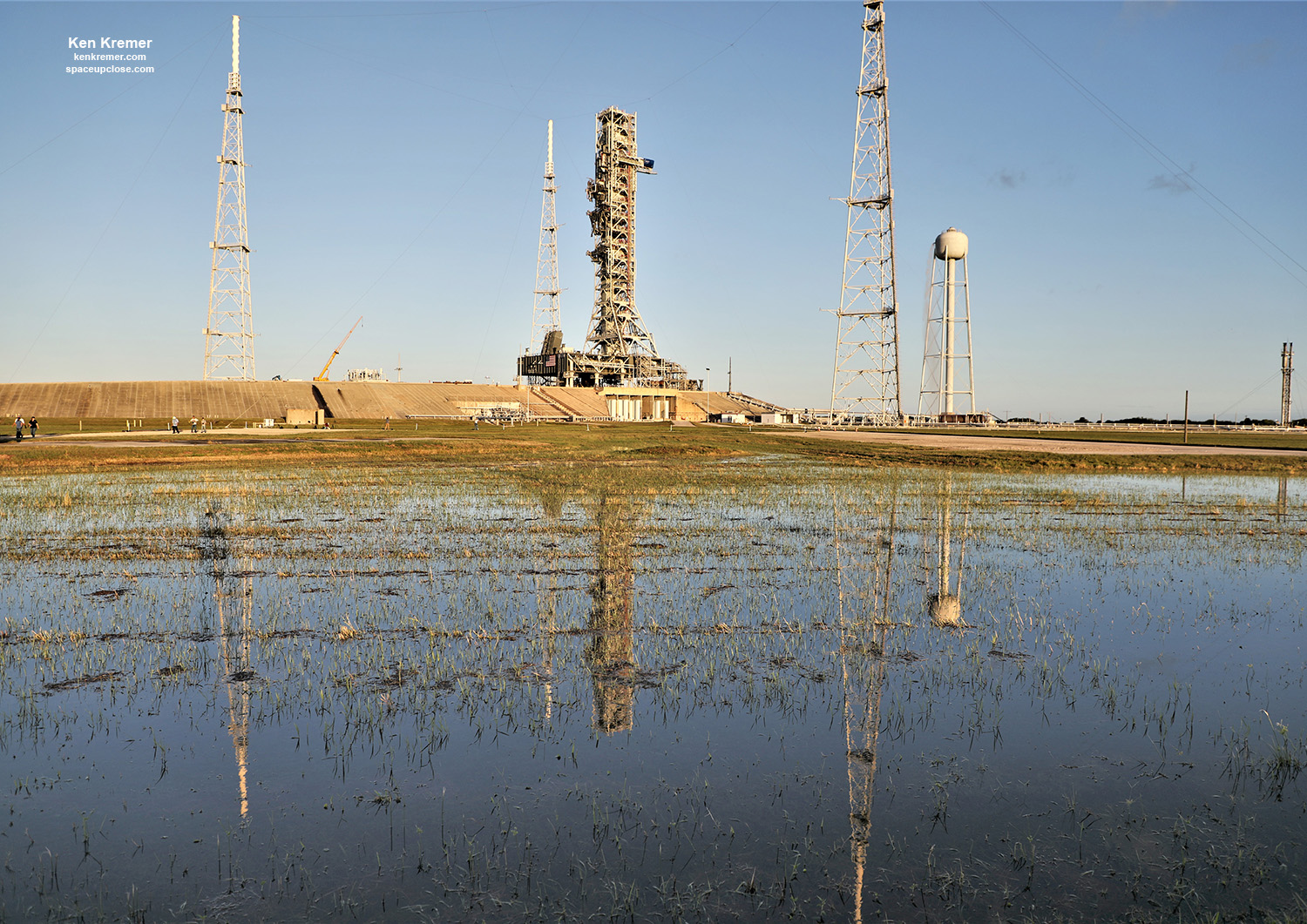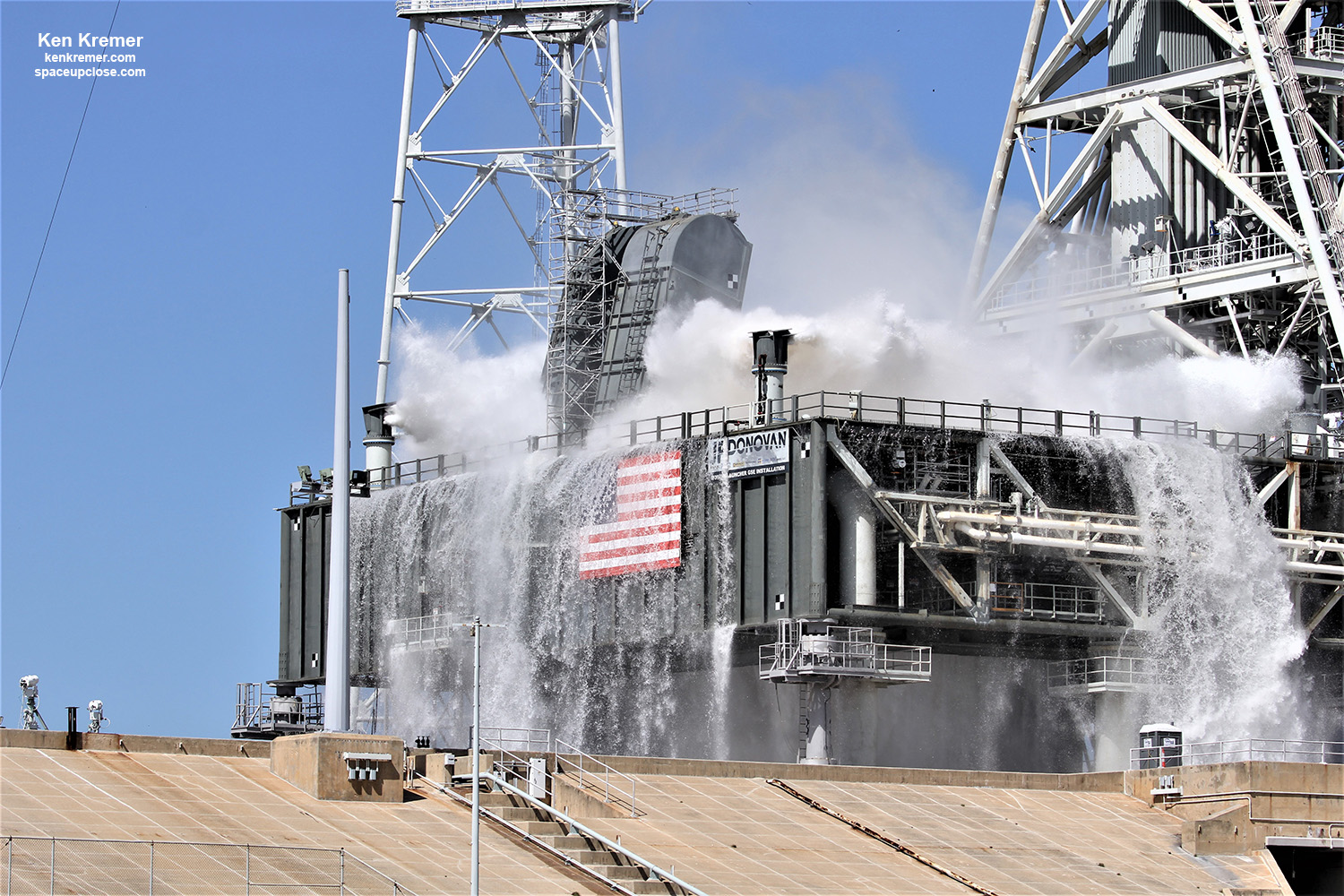
KENNEDY SPACE CENTER, FL – Technicians completed the last in an increasingly complex series of wet water flow sound suppression tests on the Mobile Launcher atop Launch Pad 39B for NASA’s mammoth Space Launch System (SLS) rocket on Saturday, Oct. 12 , when they sent nearly half a million gallons of water gushing to the pad at NASA’s Kennedy Space Center in Florida.
This final water flow test in a series of sound suppression tests at Launch Pad 39B that started earlier this summer is part of NASA’s years long campaign to prepare for the first Artemis launch to the Moon with wide ranging checkouts between the 400 foot tall mobile launcher and the launch pad structures.
After about a three hour delay the brief 20 second test took place at Noon, Oct. 12, when the rain birds open and released approximately 450,000 gallons of water onto the mobile launcher and down the launcher flame hole onto the flame deflector as well as over the sides.
The media including Space UpClose were invited by NASA to watch.
Enjoy my photos taken from quite nearby – just a few hundred feet away from Launch Pad 39B inside the security perimeter at an area called Pad 39C.
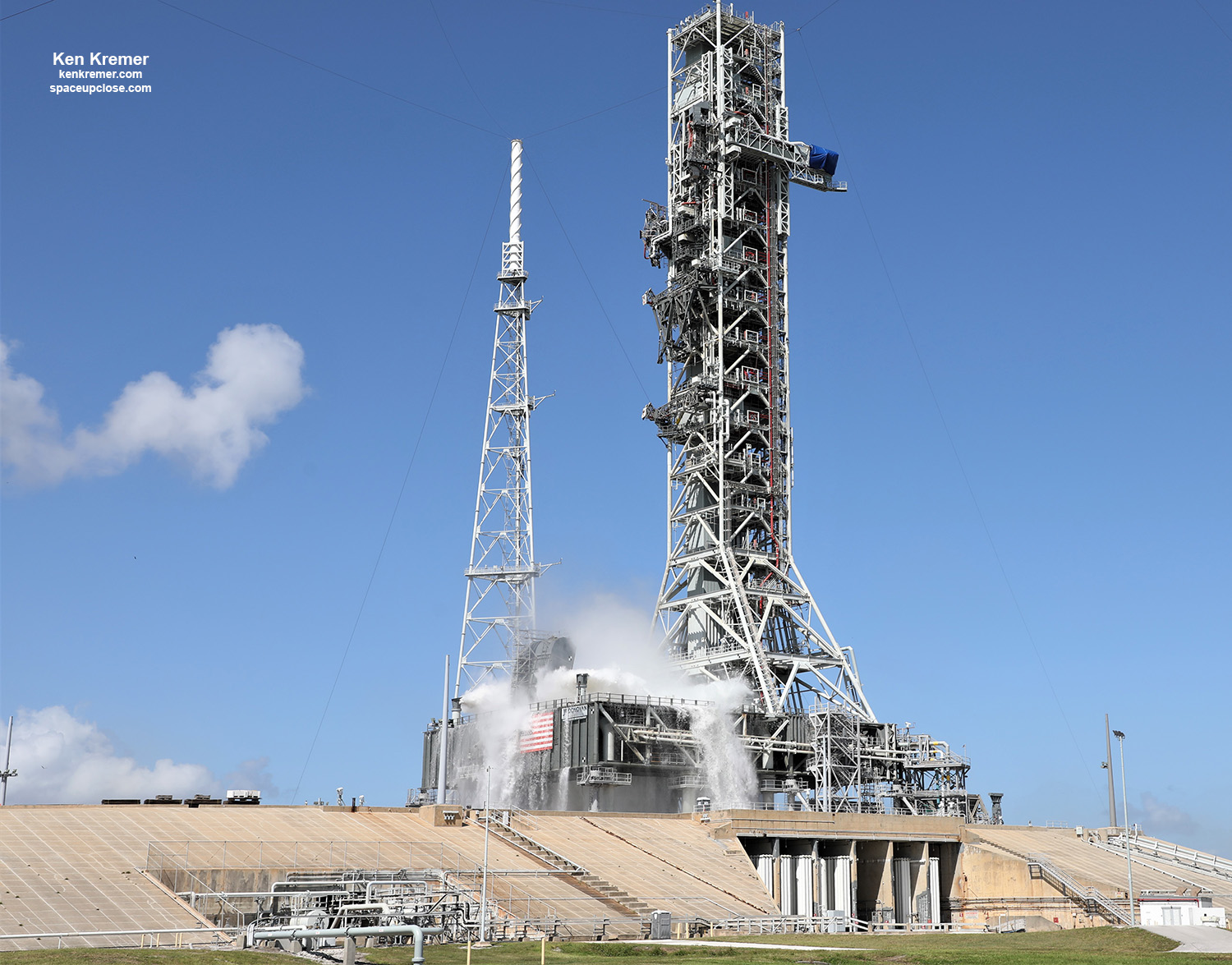
At last a noon under sunny Florida Space Coast skies there was a loud rush of sound from the pad infrastructure and then the water flow erupted – starting about 20 seconds before T-Zero. During a real launch of the 322 foot tall SLS rocket smoke and fire from the vehicle starts about 10 seconds later – before liftoff.
For the first time the flow test by the Exploration Ground Systems team also involved using the hydrogen burn-off igniters – but as expected we did not see any hints of flash since it was hidden behind the mobile launcher.
Launch of the first integrated SLS rocket and Orion deep space crew capsule is not expected until late 2020 or more likely the first half of 2021 from pad 39B
The sound suppression system delivered a peak flow rate of more than 1 million gallons water per minute.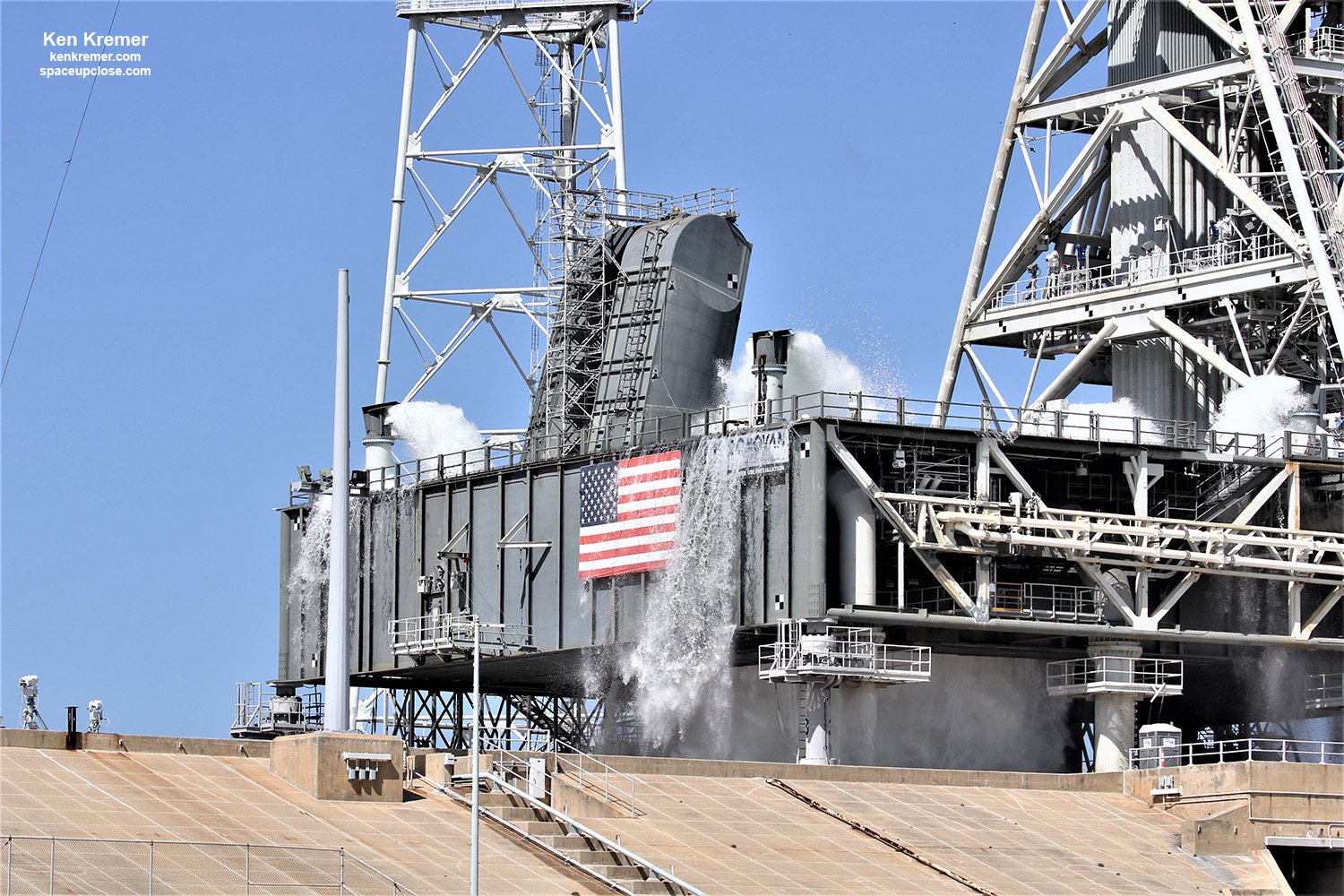
Final water wet flow test at the mobile launcher on Launch Pad 39B on October 12, 2019 at NASA’s Kennedy Space Center, FL, tests the sound suppression system that will be used for launch of NASA’s Space Launch System for the Artemis I mission. Credit: Ken Kremer/kenkremer.com/spaceupclose.com
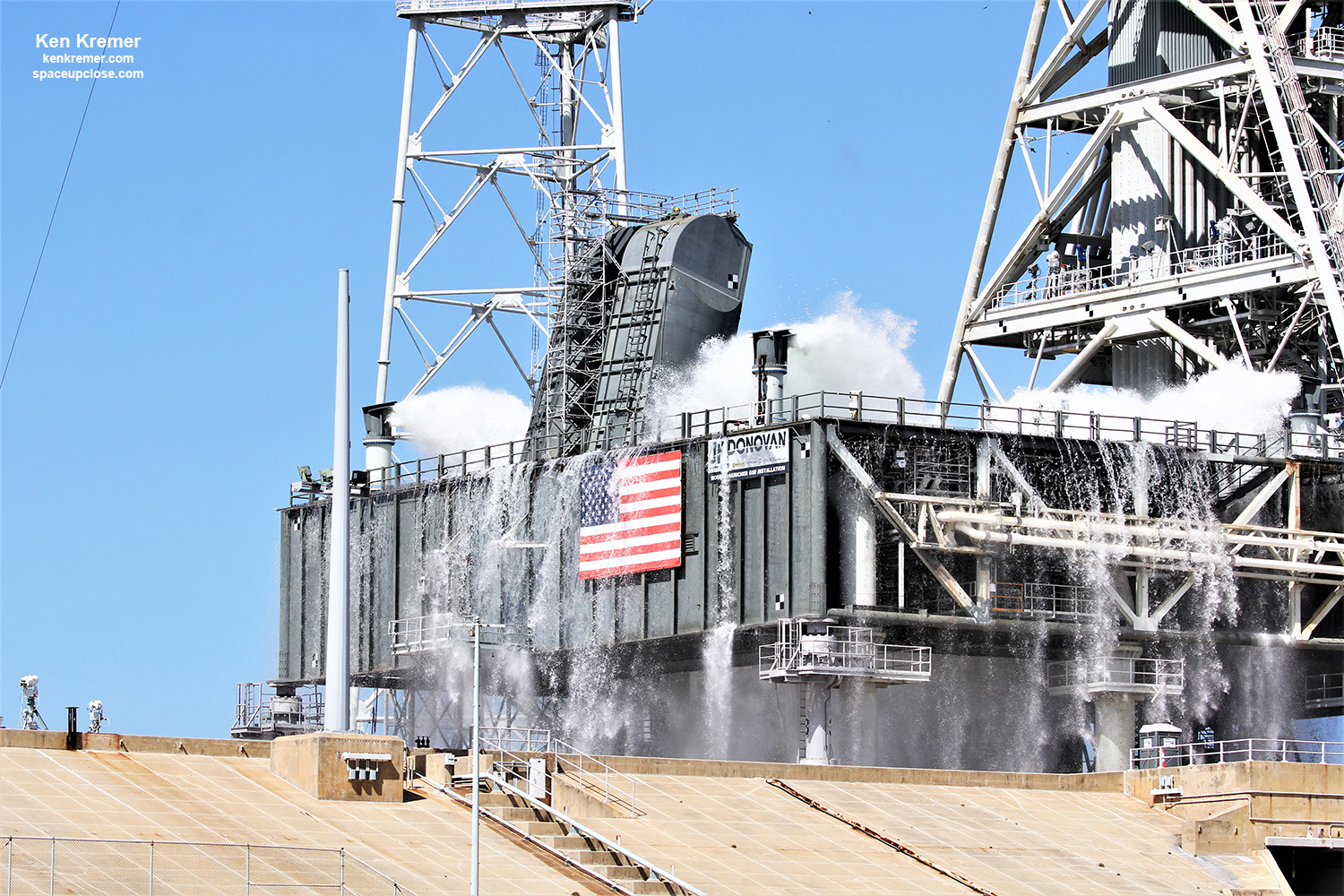
The purpose is to reduce and dampen damaging acoustic and thermal energy and high pressure waves that could otherwise damage the mobile launcher, the launch pad infrastructure and flame trench and even the rocket as the mighty SLS rocket lifts off generating some 8.8 million pounds of liftoff thrust.
During the SLS moon rocket blastoff the excruciating sound level reaches 176 decibels and the water flow cuts vibrations and sound down by a few decibels sufficient to minimize pad damage.
“SLS will create about 176 decibels at liftoff, which is significantly louder than a jetliner,” said Launchpad Element Deputy Project Manager Nick Moss. “The sheets of water created by the flow will curb that sound by knocking it down a few decibels.”
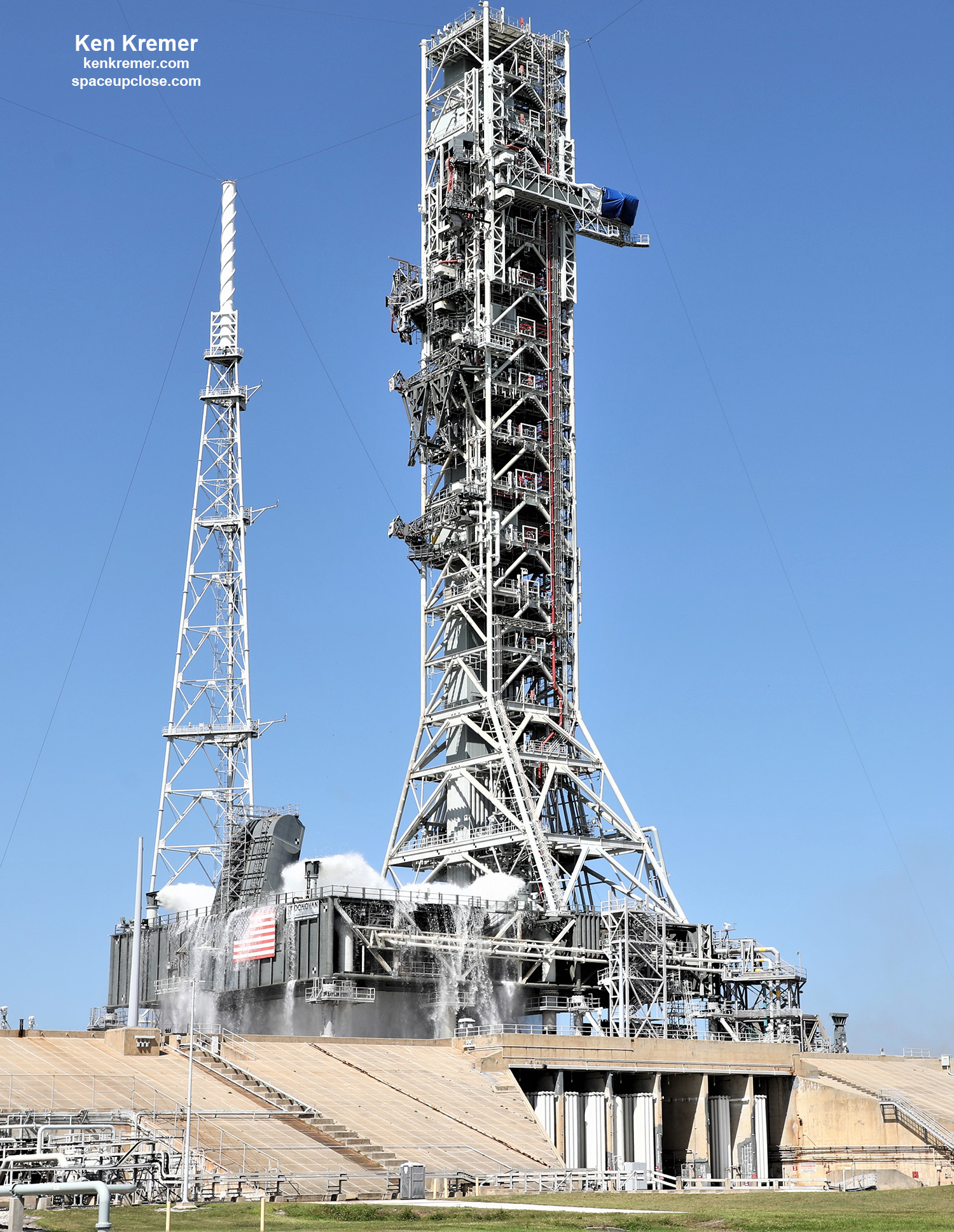
The wet flow testing work is being carried out to support NASA’s new Project Artemis goal of sending American astronauts – including the first woman and the next man – back to the Moon with touchdown on south pole of the desolate but ice-rich lunar surface by 2024.
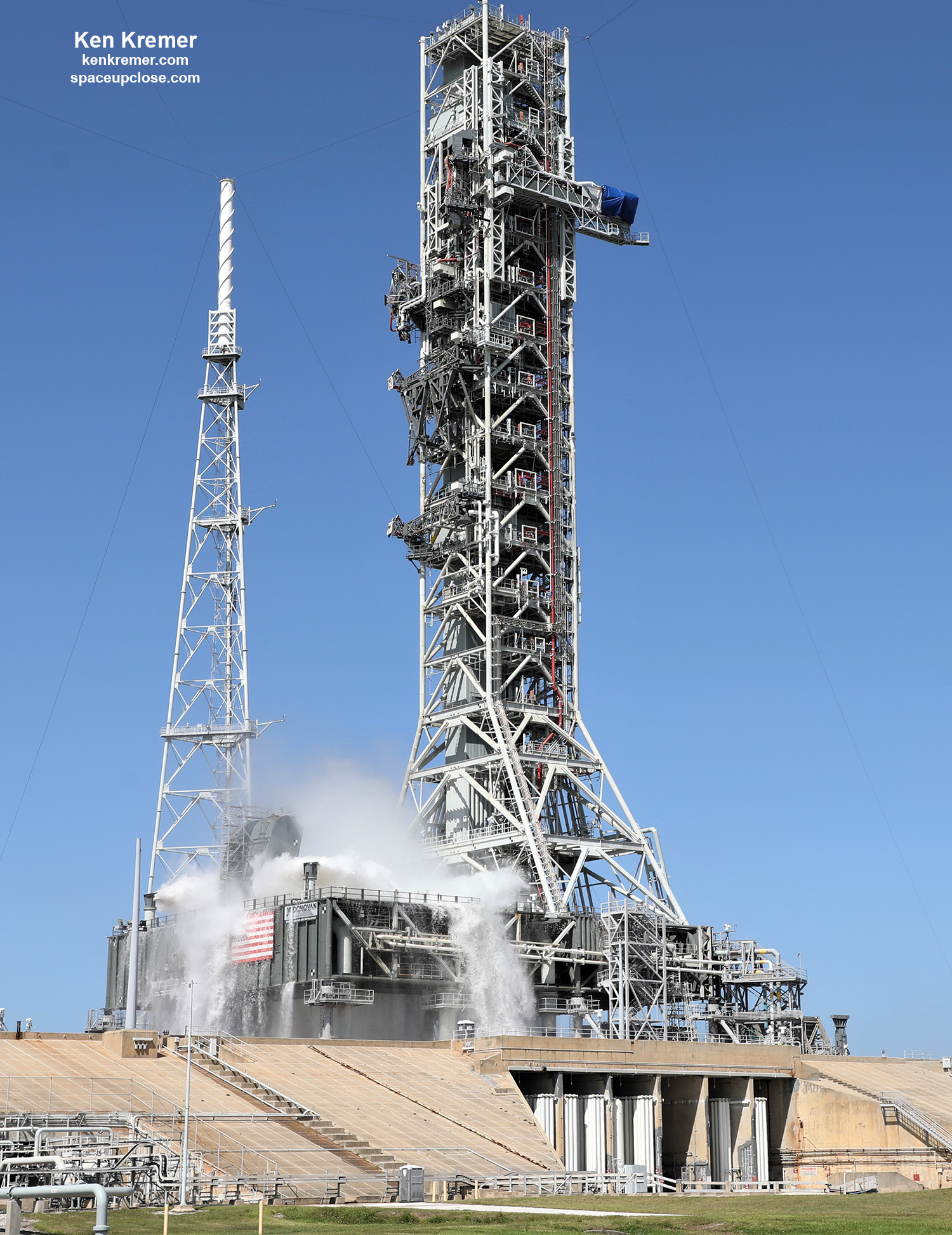
When the rocket’s engines ramp up to full power, the hot exhaust starts to push harder in the confined space of the mobile launcher. These pressure waves can cause vibrations that could potentially damage the mobile launcher, as well as the rocket about to take flight, according to NASA.
“The sound suppression system acts as a dampener, absorbing the acoustic energy and reducing the strength of the pressure waves,” said Cliff Lanham, mobile launcher senior project manager. “It creates a protective environment to ensure safe liftoff.”
“And that’s what we’re all here for — making sure that we can get to those last 10 seconds safely and get the vehicle going,” Moss said.
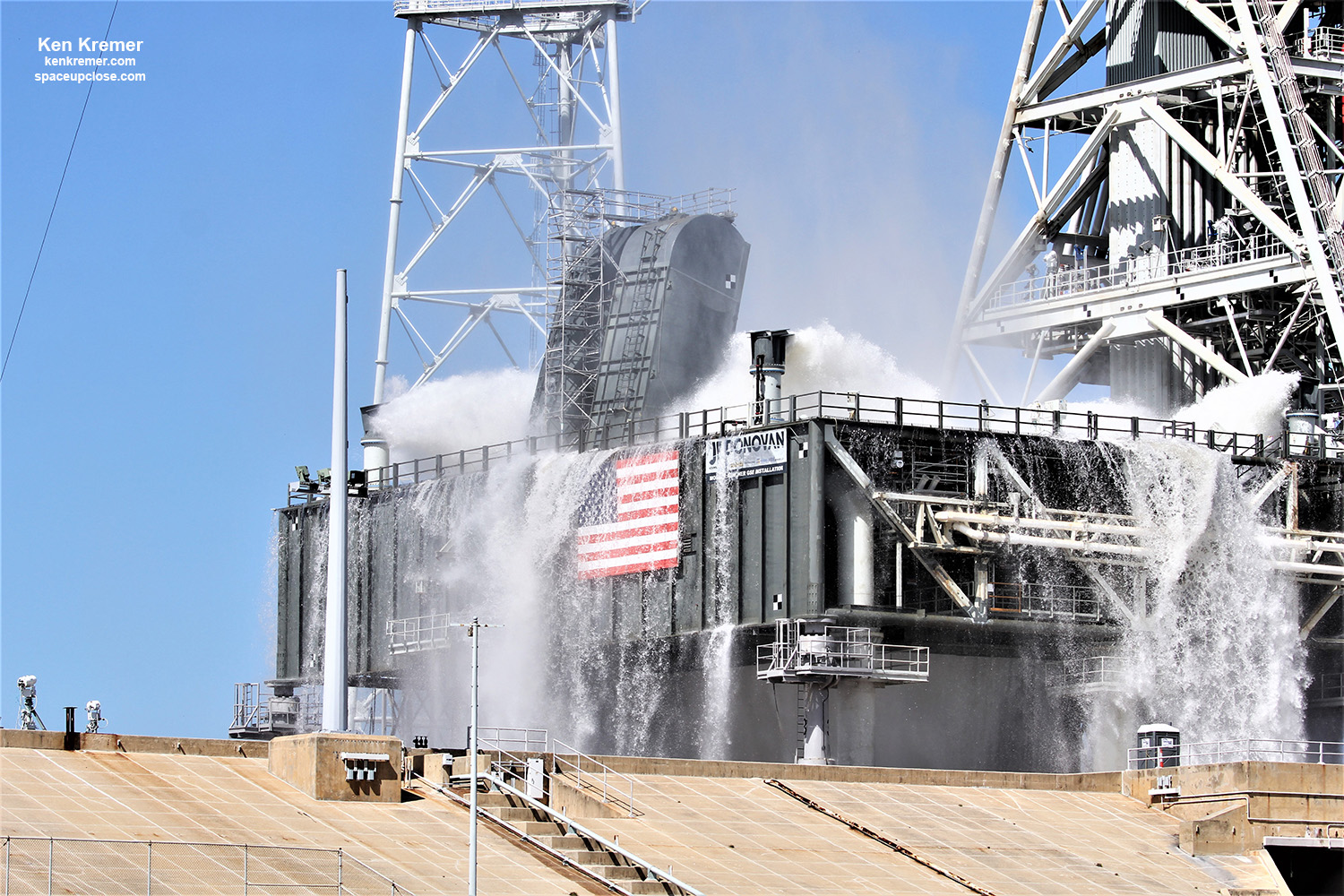
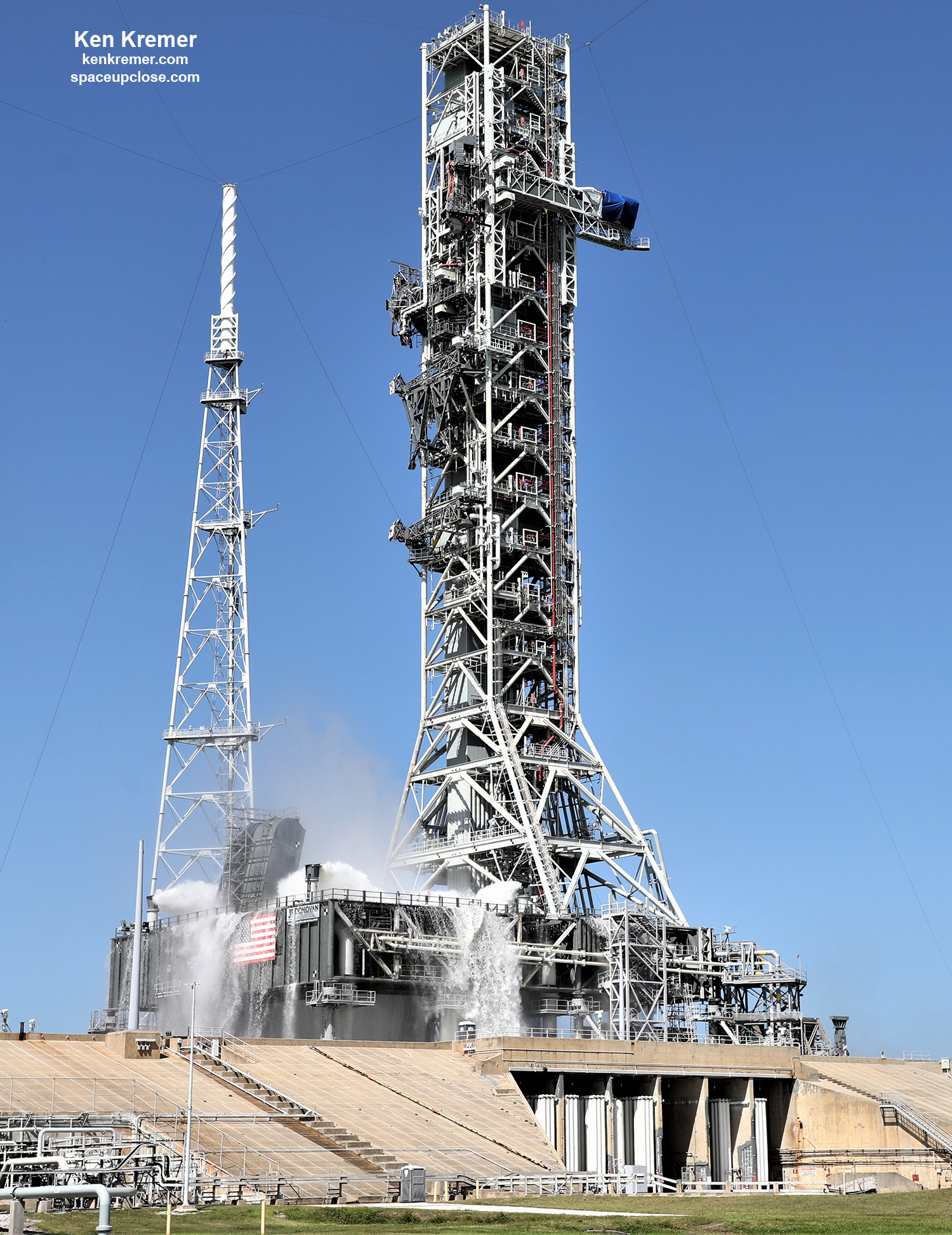
All the data collected is being analyzed by the team in post-test analysis and is being imported into the launch operations procedures for the ground launch sequencer software that will be used on launch day was used to command launch support systems at Pad B from the Launch Control Center.
The team has also test the impact of a” single valve failure test flow to better characterize off-nominal system performance.”
Meanwhile another group from Exploration Ground Systems team is working with the 212 foot long core stage pathfinder mock-up for NASA’s Space Launch System (SLS) megarocket.
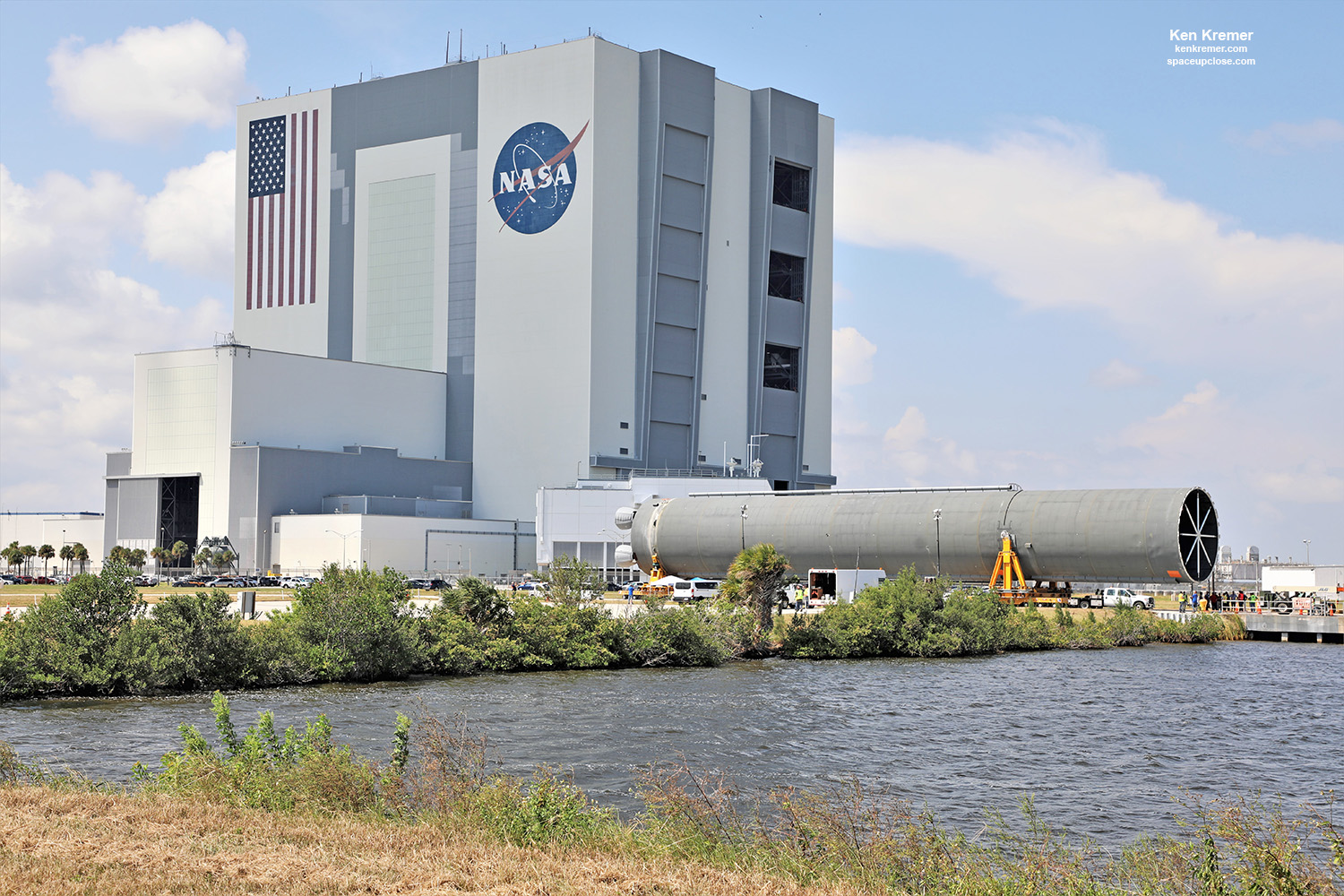
It was offloaded from the agency’s one-of-a-kind Pegasus barge Sept 30, at the Kennedy Space Center (KSC) in Florida after a week long journey from NASA Stennis.
Pathfinder core stage will serve as a test article for critical lifting and stacking maneuvers inside the iconic Vehicle Assembly Building (VAB) for the next 4 weeks in support of the Artemis moon exploration program aimed at landing US astronauts on the lunar south pole by 2024.
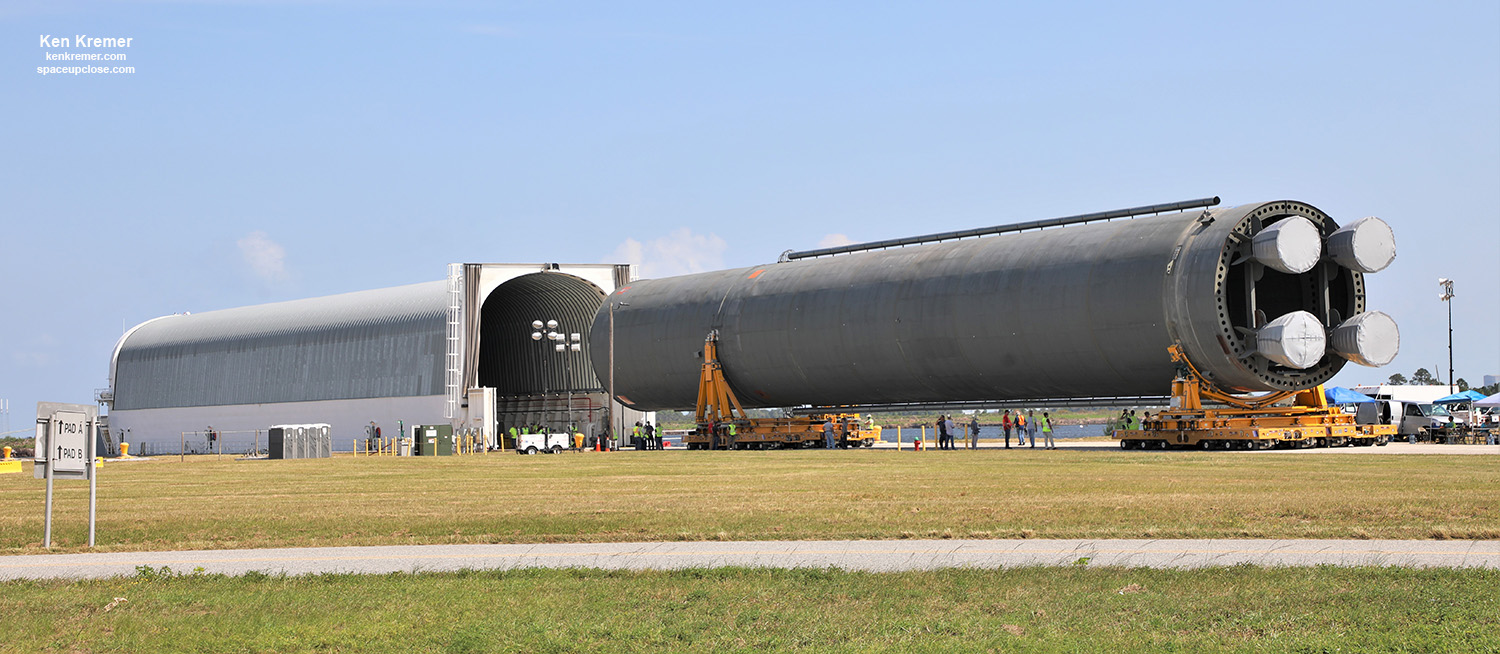
After all the pad 39B testing is complete this fall, the Mobile Launcher will roll back to the VAB for stacking of the 1st integrated SLS rocket and Orion crew capsule in preparation for the debut launch of the Artemis 1 mission to the Moon slated for NET late 2020.
The Mobile Launchers next roll to the pad thereafter will be with that 1st integrated SLS rocket and Orion crew capsule for Artemis 1.
This rollout along the same KSC crawlerway used during the Apollo and Space Shuttle eras began a 2-day affair of 4.2-mile (6.8-kilometer).
A normal rollout from the VAB to the top of pad 39B will take about 8 hours or so as the massive structure moves at a whopping top speed of 0.85 MPH
Artemis 1 will be the first mission launching Orion on the SLS rocket from Kennedy’s Launch Pad 39B. The mission will take Orion thousands of miles past the Moon on an approximately three-week test flight.
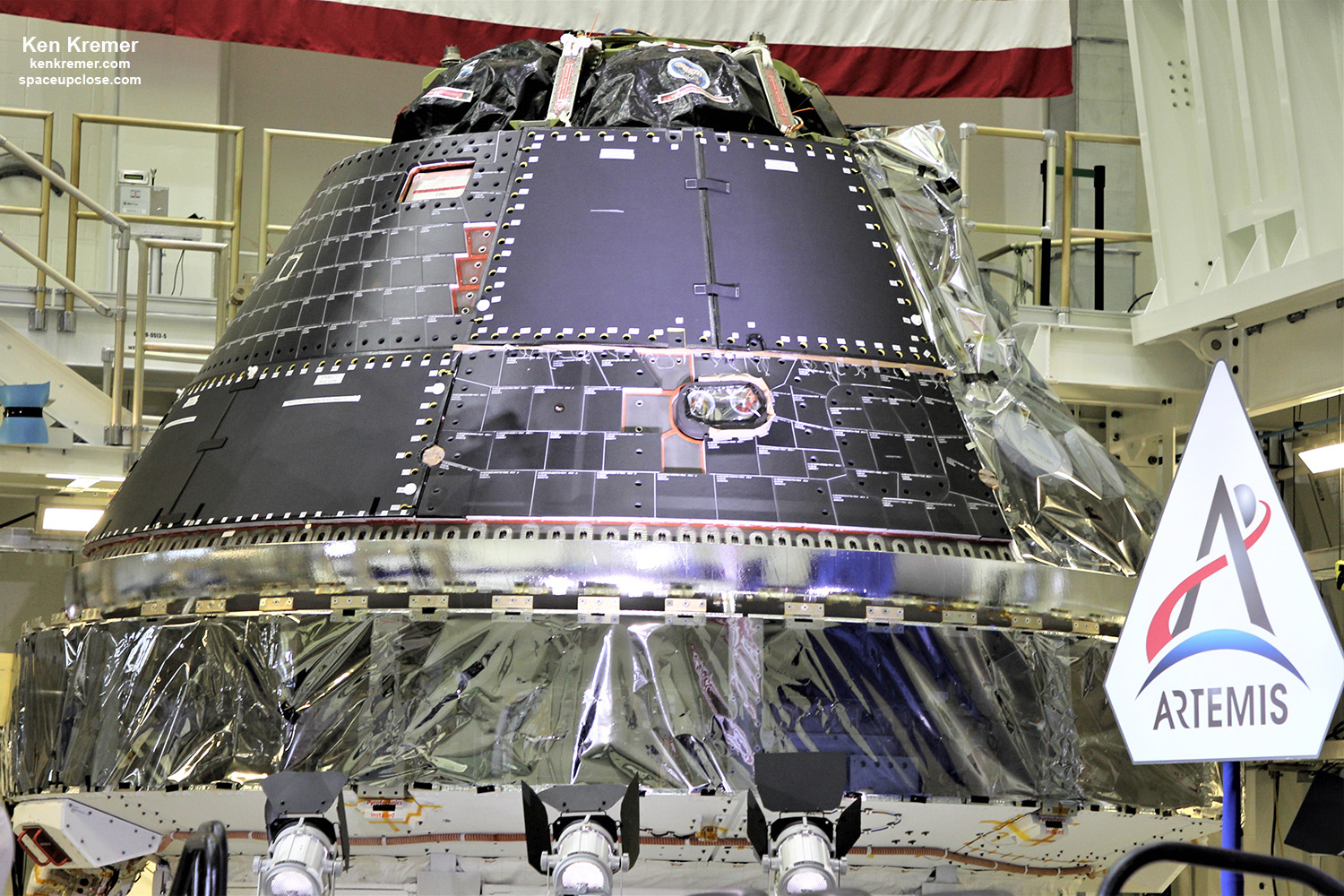
Stay tuned here for Ken’s continuing Earth and Planetary science and human spaceflight news: www.kenkremer.com –www.spaceupclose.com – twitter @ken_kremer – email: ken at kenkremer.com
